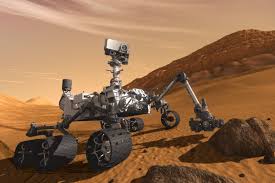NASA is getting ready to land on Mars on August 5, 10:31 PM PST. The rover is named “Curiosity”, and it’s already on its way. This video details the incredible challenges it faces to safely land on the Red Planet.
NASA has already sent the space craft with the rover that will ultimately land on Mars. We hope that it lands successfully and in-tact, which is a huge challenge given the complexity of the Mars planet’s atmosphere.
Seven Minutes of Terror
Entry, Descent and Landing (also called EDL) are the basic steps to landing on any planet. For Mars, it’s much more difficult than we have experienced with landing on the moon. NASA engineers has nicknamed Mars’ challenge as the “7 minutes of terror”. This nickname represents the 7 minutes that it takes to get from the top of Mars’ atmosphere to the bottom, without crashing, everything working smoothly and perfectly.
This doesn’t seem like a big deal until you learn all the things that need to be automated by the robotics and computers that are on-board the Mars spacecraft and rover.
The Challenges NASA Faces Landing on Mars
First, the spacecraft breaks the Mars upper atmosphere and starts generating heat on the outside of the space craft up to 1600 degrees. All while guiding the craft to a very narrow landing coordinate on the Mars surface.
Secondly, trying to slow down the space craft is very difficult. Usually, a planet’s atmosphere could slow down the space craft. Unfortunately, Mars’ atmosphere is 100 times thinner than Earth’s atmosphere, making it 100 times more difficult to slow down. So to help slow down the craft, NASA is using the world’s largest and strongest supersonic parachute ever made. The chute has to withstand 65,000 lbs of force, even though the parachute itself only weighs 100 lbs. When the parachute deploys, the cord holding the parachute will experience a neck-snapping 9-G’s of force (9 times Earth’s gravity).
Third, the head shield on the bottom of the craft must be removed. To do this, the space craft releases the bottom side of the craft, exposing the inside components.
Lastly, the rover must release itself from the spacecraft and free-fall to the Mars’ surface, but it’ll fall at 200 MPH, enough to crash and demolish the rover. To slow it down to a space landing speed, the rover has rocket motors (similar to R2D2 in the beginning of Star Wars Episode 3) that slow it down. And then it lowers itself with 20-meter tether cords to the surface.
All in 7 minutes.
If any one thing doesn’t work right, it’s game over, the entire mission is scratched. Given the decades of work to build and send this craft to Mars, that’s a big deal.








